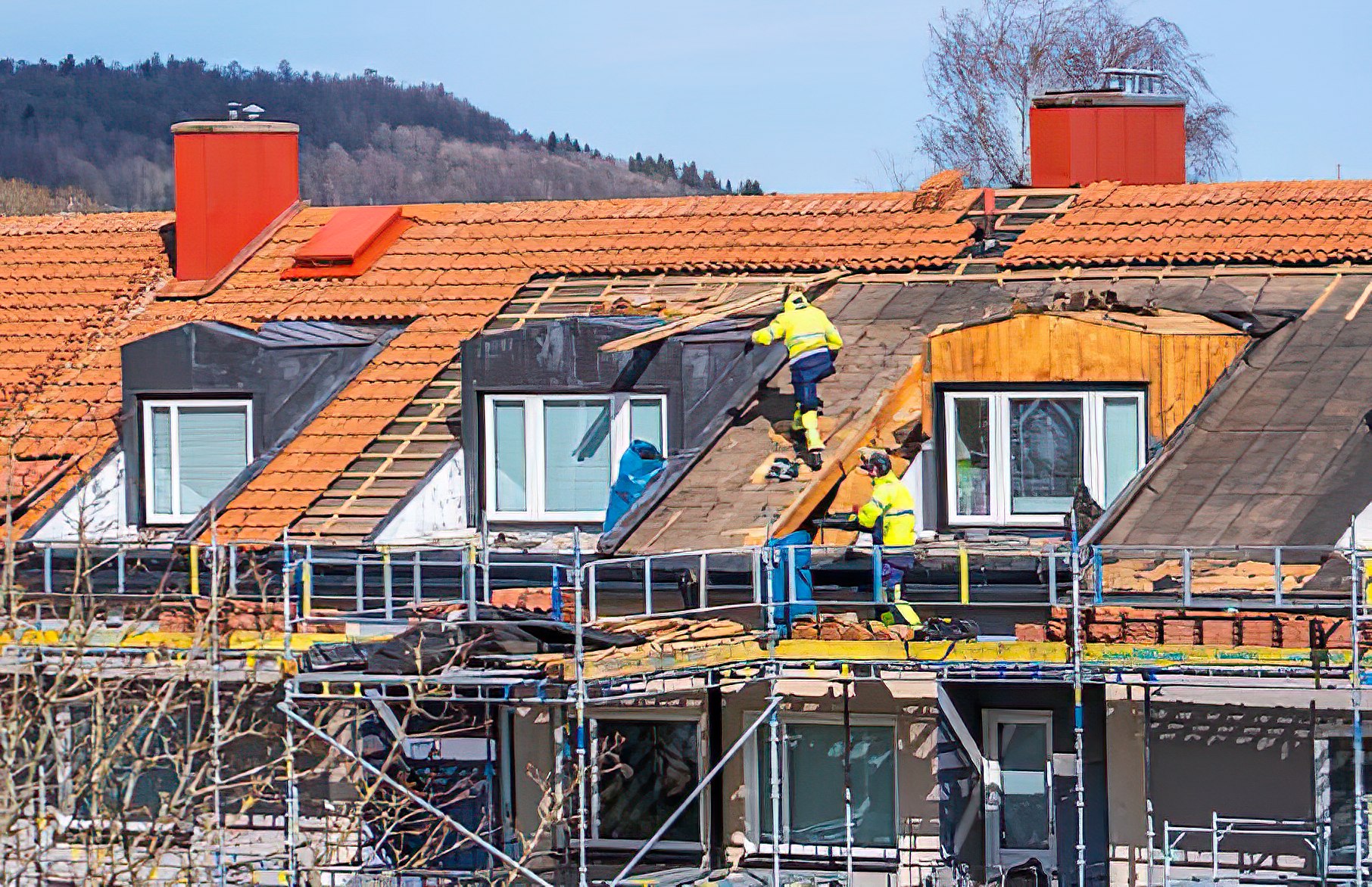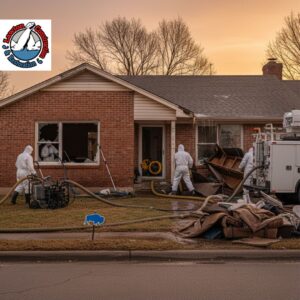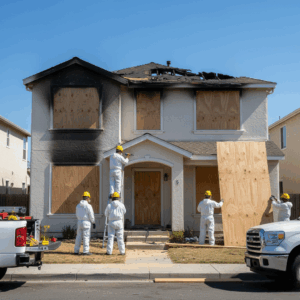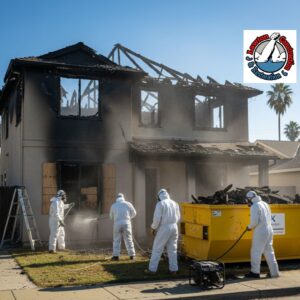Fire Damage Restoration Emergency Checklist
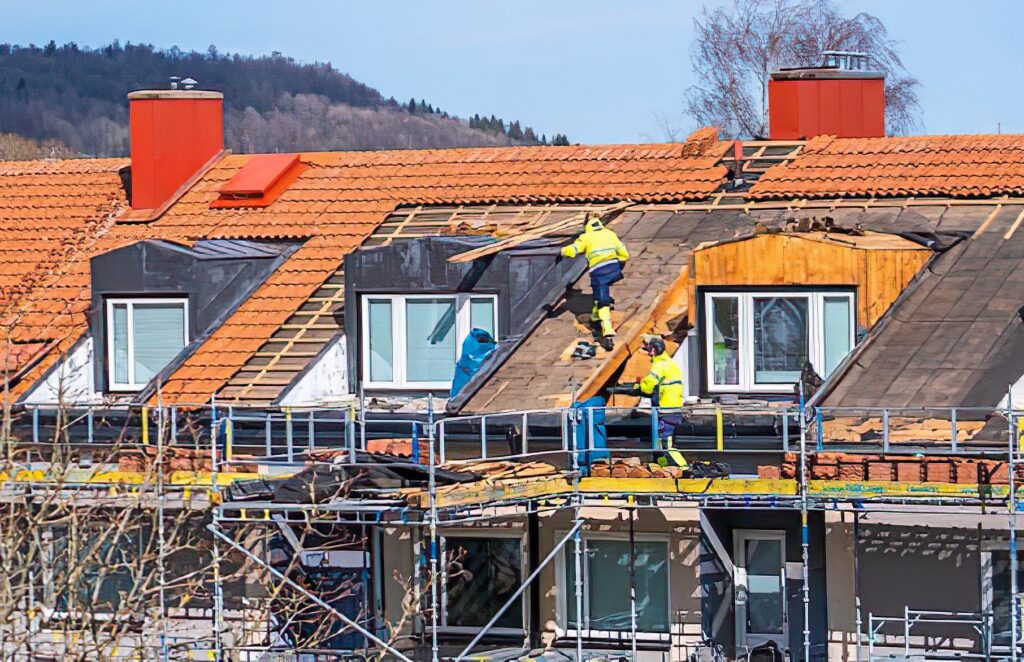
Table of Contents
Introduction
Imagine walking through your home after a fire—walls blackened with soot, furniture damaged, and the air heavy with smoke. It’s overwhelming, right? In the aftermath of such a traumatic event, knowing what to do next can feel impossible. That’s why having a solid Fire Damage Restoration Emergency Checklist isn’t just helpful—it’s essential.
When disaster strikes, every minute counts. Do you know who to call first? What steps to take to protect your property? How to safely begin cleaning up soot and debris? Whether you’re dealing with a small kitchen fire or a more extensive blaze, being prepared can make all the difference in how quickly and effectively you recover.
In this blog, we’ll walk you through a comprehensive emergency checklist for fire damage to help you navigate the critical first steps after a fire. From securing your property to choosing the right restoration professionals, you’ll gain the clarity and confidence needed to take action when it matters most.
Let’s dive in—and get you back on the path to restoration, step by step.
Assessing the Immediate Safety of the Property
Before you even think about cleanup or calling your insurance, stop and ask yourself: Is it safe to be here? Fire may be out, but dangers often linger long after the flames are gone. Prioritizing safety isn’t just smart—it’s non-negotiable.

Here’s where your Fire Damage Restoration Emergency Checklist truly begins. These first steps are all about protecting yourself, your loved ones, and your property from further harm.
Start with These Critical Safety Checks:
- Wait for the all-clear
Only re-enter your property after fire officials say it’s safe. Hidden embers and structural weaknesses could still pose serious risks. - Look for visible structural damage
Check ceilings, floors, and walls for cracks, warping, or instability. If anything looks off, stay out and call a professional. - Shut off utilities
If they haven’t already been turned off, do so immediately:- Gas leaks can be deadly.
- Electricity and water can create dangerous conditions if systems are compromised.
- Wear protective gear
Smoke and soot contain toxic particles. Use gloves, goggles, and a mask (preferably N95 or better) if you must go inside. - Avoid touching or moving items
It’s tempting to start cleaning or salvaging, but wait until professionals assess the scene. Premature actions can worsen the damage or void insurance claims.
A Calm Mind in a Chaotic Moment
Staying focused during this stage helps you make better decisions when everything feels like it’s spinning. If it’s safe, start taking photos of the damage—but don’t take unnecessary risks. Your life and health are worth far more than any possession.
This early phase sets the tone for everything that follows. By handling the first steps with care, you’re paving the way for a smoother, safer restoration process.
Contacting the Right Professionals
Once the immediate danger has passed and your property is secure, the next step is rallying the right team to help you recover. But with so many moving parts, where do you even begin?
Start with one critical truth: you shouldn’t go through fire damage restoration alone. Knowing who to call—and when—can drastically improve your outcome and reduce the stress of the situation.
Here’s Who You Need on Speed Dial:
- Your Fire Restoration Company
Time is everything in a crisis. Contact a reputable restoration service as soon as possible. Their fast response can help minimize damage, especially when it comes to preventing further soot and smoke issues. Many of these companies offer 24/7 support, so don’t hesitate—even if it’s after hours. - Your Insurance Provider
Let them know what happened and ask what’s needed to start your claim. Be clear, take notes, and ask about coverage specifics related to fire and soot cleaning. Some policies require prompt reporting, so don’t delay. - A Certified Fire Inspector or Structural Engineer
Even if firefighters cleared you for reentry, you may still need a more detailed safety inspection. A licensed professional can assess the integrity of your home and identify hidden hazards before restoration begins. - Temporary Housing Services (if applicable)
If your home is uninhabitable, ask your insurer about short-term housing assistance. Some policies cover hotels, rental homes, and even meals during displacement.
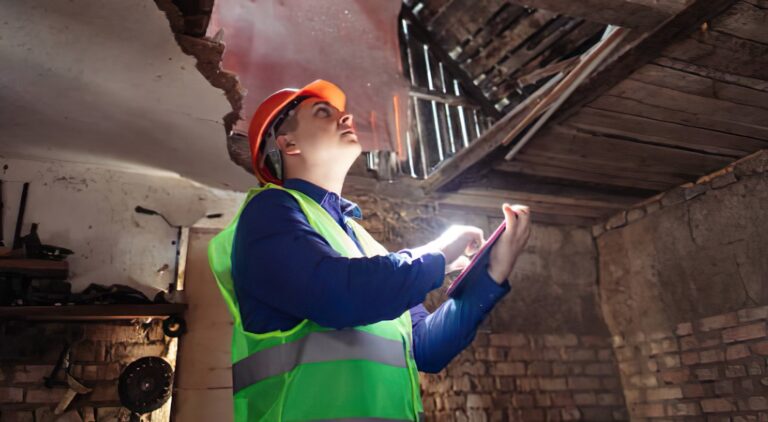
Be Your Own Advocate
Don’t assume that every service will communicate with each other. Take notes, keep names and contact info organized, and follow up often. This is your home, your safety, and your recovery—we’re just here to help you own the process.
The faster you coordinate with professionals, the faster you can move from emergency mode to recovery. Plus, with experts handling the complex stuff, you’ll have more peace of mind knowing every angle is covered.
Securing the Property
Once the flames are out and the professionals are on their way, your next mission is to protect what’s left. Fire damage often leaves your home vulnerable—broken windows, compromised doors, and exposed interiors create opportunities for further damage, theft, or even weather-related issues. This is where your emergency checklist for fire damage becomes an invaluable tool.
Think of this step as damage control. You’re not fixing everything yet—you’re just preventing it from getting worse.
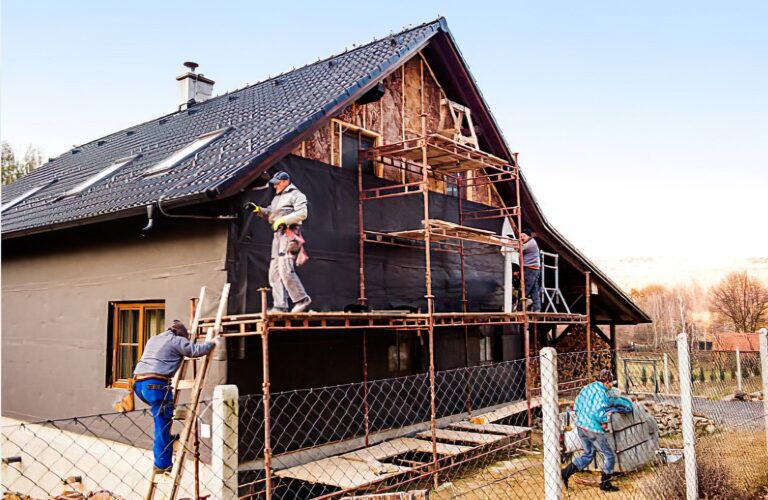
Simple but Effective Ways to Secure Your Property:
- Board up broken windows and doors
Gaping entry points make it easy for intruders—or the elements—to make matters worse. Plywood and heavy-duty fasteners will do the job temporarily until full repairs are made. - Use tarps to cover roof or wall openings
Fire often eats through roofing or siding. Tarps help keep out rain, debris, and pests, buying you time until restoration work begins. - Install temporary fencing if needed
For larger properties or total loss scenarios, temporary fencing can deter unwanted visitors and keep the area safe. - Shut off remaining utilities (if not already done)
If something wasn’t handled in the initial safety check, now’s the time to confirm it. You don’t want gas leaks or electrical issues to add to your list of problems. - Label hazards clearly
Use caution tape or signage to mark off dangerous zones like collapsed floors, damaged staircases, or unstable structures.
Why Securing Matters More Than You Think
Leaving a fire-damaged property exposed opens the door—literally and figuratively—to more complications. Theft, vandalism, mold from water intrusion, and liability risks can all snowball quickly. Plus, insurance companies may expect that you took reasonable steps to protect the property after the fire. Failure to do so could impact your claim.
By acting swiftly, you not only protect your belongings—you demonstrate responsibility to your insurer and make the eventual restoration process smoother and more efficient.
Documenting and Inventorying the Damage
When disaster strikes, it’s easy to feel overwhelmed. The last thing you want to think about is taking inventory of everything that’s been damaged. But trust me—this step will not only help you keep track of the loss but will also be crucial when working with insurance adjusters and fire restoration professionals.
How can you be sure that you’re documenting everything accurately? What’s the best way to organize it? Let’s break it down.

How to Effectively Document Fire Damage:
- Take clear photos and videos of everything
The more thorough you are here, the better. Go room by room and capture both wide-angle shots and close-ups of specific damage. Don’t forget smaller items like electronics, furniture, and personal belongings. - Create a written inventory list
This doesn’t need to be exhaustive—just a quick rundown of key items, including furniture, electronics, and valuable possessions. Record brand names, models, and conditions if possible. This written list can be invaluable when working through the insurance claim process. - Record valuable items separately
High-value items such as jewelry, antiques, or artwork should be documented in greater detail. Include receipts, certificates of authenticity, or any other paperwork that can prove their worth. - Keep track of temporary expenses
If you’ve had to temporarily relocate, or incur additional living costs due to the fire, keep all receipts for meals, hotel stays, and other temporary expenses. Some insurance policies will reimburse you for these costs, but you’ll need documentation. - Don’t throw anything away yet
It’s tempting to clear out damaged belongings to make room for cleanup, but resist the urge until you’ve taken photos and inventory. You may need these items as proof for insurance claims, and some might be salvageable after proper restoration.
Why This Step is Crucial
Taking the time to document the damage properly can significantly streamline your insurance claim process. Remember: the more thorough you are, the better your chances of receiving a fair payout. Insurance adjusters will need this information to assess the damage accurately, and professionals involved in fire damage restoration will also refer to these records to determine the extent of the work needed.
This stage may feel tedious, but it will pay off in the long run. Plus, organizing the damage now means less stress when it’s time for repairs and rebuilding.
Initial Cleanup and Damage Control
Now that the immediate safety measures are in place, it’s time to focus on one of the most pressing tasks: cleanup. While it’s tempting to dive right into removing soot and debris, it’s important to take a strategic approach. Why? Because the way you handle the cleanup can make a huge difference in the effectiveness of the fire damage restoration process.
So, where do you start?
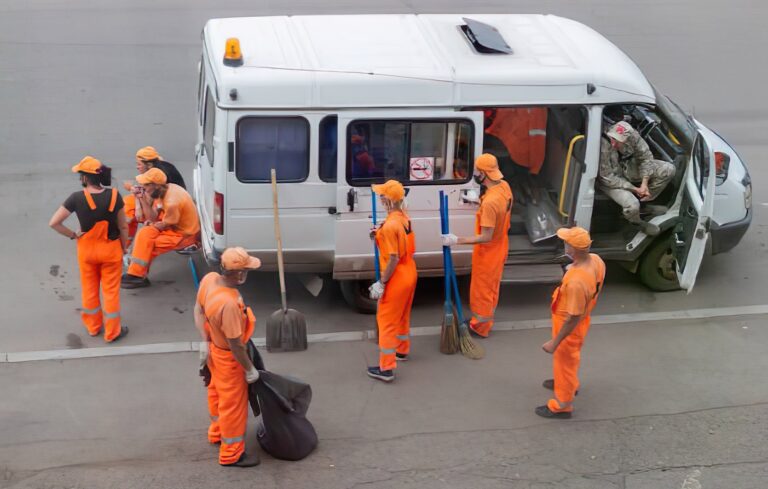
Prioritize What Can Be Safely Cleared First:
- Ventilate the space
Smoke odors can linger long after the fire has been extinguished. Open windows and doors to allow fresh air in and help dissipate the smell. If it’s safe, use fans to increase airflow and speed up the process. - Remove soot and debris from non-porous surfaces
Start by carefully cleaning hard, non-porous surfaces like metal, glass, or tile. Use a soft cloth or sponge with a mild detergent. Be gentle—scrubbing too hard can cause scratches or spread soot further. - Protect undamaged areas
Use tarps or plastic sheeting to cover furniture and unaffected areas of your home. This helps prevent soot from contaminating clean spaces while you focus on the cleanup in more heavily damaged areas. - Separate salvageable items from those that are beyond repair
It’s crucial to identify what can be saved and what should be disposed of. Focus on electronics, fabrics, or materials that could be irreparably damaged by the fire or smoke. For everything else, assess the potential for soot cleaning or professional restoration. - Don’t attempt heavy lifting or dangerous removal
If there’s debris or damaged structures you can’t move safely on your own—especially if it involves hazardous materials—wait for the restoration professionals. They have the right equipment and knowledge to handle it.
The Importance of Professional Help in Cleanup
While DIY cleanup might seem like a way to save time or money, don’t underestimate the complexity of fire damage. In fact, cleaning up improperly can do more harm than good. Fire damage restoration experts are trained to handle the delicate and detailed work required to fully restore your property. They also have access to specialized tools and equipment for soot cleaning, odor removal, and structural repairs that are far beyond the scope of a typical home cleanup.
By carefully assessing which tasks you can handle on your own and which ones need professional intervention, you ensure that your property is properly prepared for a full restoration. Taking these early steps will ultimately lead to a faster, more efficient recovery process, without compromising the safety and integrity of your home.
Working with Insurance Adjusters
Navigating the insurance claim process after a fire can be overwhelming. You’ve dealt with the immediate aftermath, secured your property, and started cleanup—but now, the paperwork begins. It’s easy to get lost in the process, but knowing how to work with insurance adjusters effectively can help you get the most out of your claim.
So, how can you make sure your insurance claim is processed smoothly and quickly?
Steps to Ensure a Smooth Insurance Process:
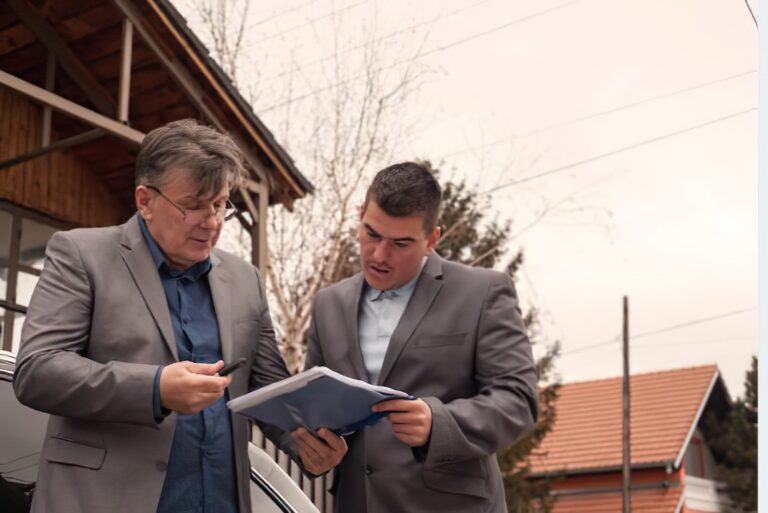
- Be present during the adjuster’s visit
Schedule a time when you can be present to walk through the property with the insurance adjuster. This ensures that they see everything firsthand and gives you the chance to explain specific damage. Don’t hesitate to point out areas that may not be immediately visible or that need closer inspection. - Provide organized documentation
The more organized you are, the faster the process will go. Present your detailed inventory list, photos, and videos of the damage, along with receipts for valuable items and temporary expenses. The adjuster will use this information to assess your claim and determine the coverage. - Ask about the specifics of your coverage
Make sure to understand what’s covered under your policy. Ask about temporary living expenses, the cost of soot cleaning, and other restoration services. Some policies cover costs beyond just repairs, such as hotel stays or food if you’re displaced from your home. - Stay in touch and follow up regularly
Insurance companies can sometimes be slow to process claims, especially after large-scale disasters. Stay proactive by following up with your insurance adjuster regularly. Keep a log of all conversations and emails for your reference. - Know when to ask for additional support
If you feel that your claim isn’t being handled fairly or you’re not receiving the support you need, ask for an escalation or consult with a public adjuster. They’re experts who can help you navigate tricky claims and ensure you get the settlement you deserve.
Why This Step is So Important?
Insurance claims are often the difference between a quick recovery and a long, drawn-out process. By understanding how to effectively communicate with your adjuster and by providing all the necessary documentation, you can speed up the claim process and ensure that you’re fully covered.
Remember, insurance adjusters work for the insurance company—not for you. It’s your responsibility to advocate for yourself and ensure you get the compensation you deserve.
Restoration and Rebuilding: Bringing Your Home Back to Life

Now that you’ve documented the damage, secured your property, and worked through the insurance process, it’s time for the most important phase of recovery: the restoration and rebuilding process. This is where your home starts to feel like home again, but it’s also the most complex and labor-intensive part of the journey. So, how do you ensure that the restoration process goes smoothly and restores your property to its pre-fire condition?
- Choosing a Restoration Company
Not all restoration companies are created equal. It’s important to find a team that specializes in fire damage restoration and has the expertise to handle everything from structural repairs to soot cleaning. Ask about their experience with your type of fire damage and make sure they’re licensed, insured, and have the right equipment for the job. - Assessing and Addressing Structural Damage
Depending on the severity of the fire, your home may have sustained serious structural damage. A restoration company will perform a detailed inspection of your home’s foundation, walls, and roof. They’ll work with engineers and contractors to ensure that your home is structurally sound before any cosmetic repairs begin. - Cleaning Up the Soot and Smoke Damage
Soot can infiltrate every nook and cranny, leaving behind an oily residue that can damage surfaces, furniture, and electronics. Soot cleaning is essential for ensuring that your home is thoroughly cleaned and restored to its former condition. Professionals use specialized equipment and techniques to remove soot without causing further damage. - Restoring and Replacing Damaged Items
Furniture, flooring, electronics, and personal belongings may be salvageable, but some items might need to be replaced. Restoration professionals can help determine which items can be cleaned and restored and which ones need to be discarded. They’ll also work to restore your home’s aesthetic by repairing or replacing drywall, flooring, and other structural elements. - Dealing with Smoke Odors
Even after everything seems cleaned up, smoke odor can linger. Special techniques like ozone treatments or thermal fogging are often used to eliminate persistent odors and ensure your home doesn’t just look clean but smells fresh as well.
Why Professional Help is Crucial
Restoration after fire damage is a delicate process that requires specialized skills and tools. While DIY fixes may seem like a cost-saving measure, they often result in incomplete restoration or further damage down the line. By working with professionals, you ensure that your home is not only safe but restored to its full potential.
It’s also important to remember that fire damage isn’t just about what you can see—many of the most significant issues are hidden beneath the surface. Experts are trained to address these hidden problems, ensuring that your home is safe, comfortable, and functional for the long term.
Preventing Future Fire Damage: Proactive Steps to Take
You’ve successfully navigated the aftermath of a fire, restored your property, and worked with professionals to bring your home back to life. But the work doesn’t end there. If you’re wondering, “How can I prevent future fire damage?”—you’re already thinking ahead. Taking proactive steps now can help ensure that your home is better protected against future fire risks.
So, what should you do to safeguard your home and family from potential fire hazards?
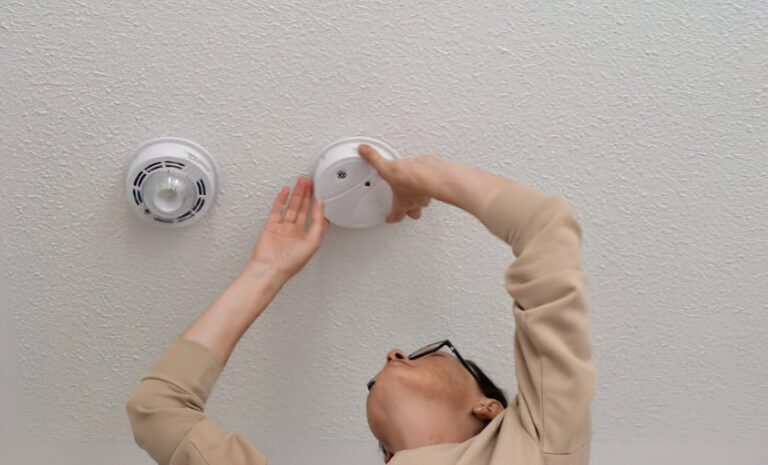
Essential Steps to Prevent Future Fires:
- Install Smoke Detectors and Fire Alarms
It’s easy to take smoke detectors for granted, but they can be lifesaving. Make sure you have working smoke detectors in every room, hallway, and on each floor of your home. Test them monthly, change the batteries at least once a year, and consider upgrading to interconnected alarms that will go off throughout the house when one is triggered. - Inspect and Maintain Electrical Wiring
Faulty electrical systems are one of the leading causes of house fires. Have a professional electrician inspect your wiring regularly, especially if your home is older. Look out for frayed cords, exposed wiring, or outlets that feel warm to the touch. It’s better to fix a small issue before it becomes a big problem. - Clear Brush and Debris Around Your Home
If you live in an area prone to wildfires, clearing any dry brush, leaves, or debris from around your home is essential. Create a defensible space by trimming trees and shrubs, especially near windows and doors, to prevent fire from spreading. Make sure to keep firewood, propane tanks, and other flammable materials away from the house. - Store Flammable Materials Safely
We all have cleaning supplies, paints, and other flammable materials around the house, but how we store them is key to preventing accidental fires. Keep these materials in a cool, dry place away from heat sources, and ensure they are tightly sealed in their containers. Don’t leave them near a furnace, oven, or other potential ignition sources. - Create and Practice a Fire Escape Plan
Ensure your family knows how to react in case of a fire. Practice your escape plan twice a year, and make sure everyone knows at least two ways to exit the house. Designate a meeting spot outside your home where everyone can safely gather. - Regular Chimney and Fireplace Maintenance
If you use a fireplace or wood stove, make sure to have the chimney cleaned and inspected annually. Soot buildup in the chimney can easily ignite and lead to a dangerous fire. Keep any combustibles far from the fire and always supervise open flames.
Why Prevention is Worth the Effort
Taking these steps may seem like a lot of effort, but consider the peace of mind it brings. A small investment in fire prevention today could prevent a devastating fire tomorrow. Plus, many of these measures—like maintaining electrical wiring or clearing brush—can also improve the overall safety and value of your property.
By taking proactive steps, you’re not just protecting your home and belongings; you’re ensuring that you won’t have to go through the heartache of another fire. It’s worth investing time and resources into prevention—it’s not just about safety, but peace of mind.
Conclusion: Moving Forward with Confidence
Recovering from a fire is never easy, but you don’t have to go through it alone. By following the steps outlined in this guide, from securing your home to working with professionals for fire damage restoration, you can take control of the recovery process and restore your property safely and efficiently.

You might be wondering: What’s the next step after all the cleanup? How do I ensure my home remains safe for the future? The truth is, taking a proactive approach now—by documenting the damage, working with experts, and investing in preventive measures—will make a world of difference down the road.
Remember, restoration isn’t just about repairing walls and replacing furniture. It’s about ensuring that your home is truly restored, with every detail carefully handled. From soot cleaning to structural repairs, it’s essential to work with a team that understands the intricacies of fire damage. By taking these actions, you’re not just bringing your home back to life; you’re making it safer and more resilient.
Ultimately, fire recovery is a journey, but with the right steps, knowledge, and professional help, it’s one that can lead to a stronger, safer home for you and your loved ones. Whether it’s the immediate cleanup or long-term prevention, the effort you put in now will pay off in peace of mind—and that’s something worth investing in.
